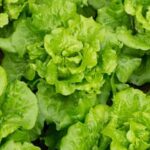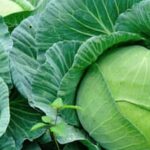As the summer season comes to a close and the cooler autumn temperatures set in, it’s time to shift our focus to preparing our gardens for a new growing season. Planning for autumn gardening is crucial, especially if you want to enjoy a bountiful harvest of fresh vegetables during the cooler months.
Starting your preparations early is key, so you can ensure that your garden is ready for planting when the time comes. Whether you’re a seasoned gardener or just starting out, autumn presents a unique opportunity to grow an assortment of vegetables that thrive in the milder weather.
One of the first steps in preparing for autumn gardening is selecting the right vegetables that are well-suited for cooler temperatures. From leafy greens like kale and spinach to root vegetables like carrots and radishes, there are plenty of options to choose from.
These vegetables not only tolerate the brisk fall weather but also benefit from it, producing sweeter and more flavorful crops. By focusing on these varieties, you can set yourself up for success in your autumn vegetable garden.
Planning your garden layout plays a crucial role in maximizing growing space and sunlight exposure for your autumn vegetables. Proper organization and design can help optimize growth and yield while making maintenance tasks easier.
By considering factors like plant spacing, companion planting arrangements, and sunlight requirements, you can create an efficient garden layout that promotes healthy plant growth throughout the autumn season. Stay tuned as we delve deeper into the best practices for planning your autumn garden layout to ensure a thriving vegetable garden this fall.
Best Vegetables for Autumn Gardening
Autumn is a wonderful time to start thinking about planting vegetables for your fall garden. Cooler temperatures can actually be beneficial for certain crops, making it the perfect time to grow a variety of delicious and nutritious vegetables. When planning your autumn garden, consider adding some of these top vegetables that thrive in cooler temperatures:
- Broccoli: Broccoli is a cold-hardy vegetable that actually tastes better when grown in cooler weather. It’s packed with vitamins and minerals, making it a healthy addition to any autumn garden.
- Carrots: Carrots are root vegetables that do well in the cooler temperatures of autumn. They can be harvested throughout the season, providing a sweet and crunchy addition to your meals.
- Kale: Kale is a superfood that thrives in cooler weather. It’s high in antioxidants and nutrients, making it a great choice for an autumn vegetable garden.
Other vegetables that are excellent choices for autumn gardening include cauliflower, Brussels sprouts, Swiss chard, radishes, and spinach. These vegetables not only add variety to your garden but also provide you with fresh produce well into the fall months.
Tips for Growing Vegetables in Autumn
- Plant early-maturing varieties to ensure a successful harvest before the first frost.
- Consider using row covers or cold frames to protect your crops from chilly temperatures.
- Water regularly but be mindful of overwatering due to cooler temperatures slowing down evaporation.
With proper planning and care, you can enjoy a bountiful harvest of fresh vegetables from your autumn garden. Start preparing now so you can reap the rewards of your efforts as the season progresses. Happy gardening.
Planning Your Autumn Garden Layout
Sunlight Exposure
One of the most important factors to consider when planning your autumn garden layout is sunlight exposure. Most vegetables thrive in full sun, so it is essential to position your garden where it will receive at least 6-8 hours of direct sunlight per day. Take note of any nearby trees or structures that may cast shadows on your garden and adjust your layout accordingly to maximize sunlight exposure for your vegetables.
Spacing Between Plants
Proper spacing between plants is essential for optimal growth and yield. Overcrowding can lead to competition for nutrients and water, resulting in stunted growth and poor harvests. Be sure to follow spacing guidelines provided on seed packets or plant labels to ensure that each plant has enough room to grow. Consider using techniques such as square foot gardening or raised beds to make efficient use of space while maintaining proper plant spacing.
Accessibility for Watering and Maintenance
When planning your autumn garden layout, consider the ease of access for watering, weeding, and harvesting. Ensure that pathways between rows are wide enough for you to move comfortably with watering cans or garden tools.
Raised beds or container gardening can provide easy access to plants without the need for excessive bending or reaching. By designing a layout that allows for efficient maintenance, you will be more likely to stay on top of caring for your vegetable garden throughout the autumn season.
Preparing Your Soil for Autumn Planting
Autumn is a crucial time for gardeners to prepare their soil for planting vegetables that thrive in cooler temperatures. One essential step in ensuring a successful autumn garden is to focus on enriching the soil with the necessary nutrients. This can be done by adding compost, organic matter, and fertilizer to improve the soil structure and fertility. By taking the time to prepare the soil properly, you can provide your vegetables with a healthy environment to grow and flourish.
One important aspect of preparing your soil for autumn planting is to conduct a soil test. This will help you determine the pH level of your soil as well as its nutrient content.
Based on the results of the soil test, you can then make informed decisions about what amendments are needed to improve the overall health of your soil. Whether it’s adding lime to raise pH levels or incorporating specific nutrients like nitrogen, phosphorus, and potassium, understanding your soil’s composition is key to successful vegetable gardening in the fall.
In addition to adding necessary nutrients, it’s also important to ensure good drainage in your garden beds. Waterlogged soil can lead to root rot and other issues that may hinder plant growth. To improve drainage, consider incorporating organic matter like peat moss or vermiculite into heavy clay soils.
This will help create a more balanced environment for your vegetables’ roots to access water and oxygen efficiently. By taking these steps to prepare your soil for autumn planting, you’ll be setting yourself up for a bountiful harvest of fresh vegetables throughout the cooler months.
| Importance of Soil Preparation | Tips for Improving Soil Health |
|---|---|
| Enriching the soil with compost and organic matter | Conducting a soil test |
| Adding necessary nutrients like nitrogen, phosphorus, and potassium | Ensuring good drainage in garden beds |
Planting Techniques for Autumn Vegetables
When it comes to planting vegetables for autumn gardening, it is crucial to pay attention to specific planting techniques for different types of vegetables that thrive in cooler temperatures. Understanding the unique needs of each vegetable variety will help ensure a successful harvest in the fall season. Here are some key planting techniques to consider for popular autumn vegetables:
Root Vegetables
Root vegetables such as carrots, radishes, and beets are perfect choices for autumn gardening. When planting root vegetables, it is important to make sure that the soil is loose and well-drained to allow the roots to grow properly. Plant seeds at the recommended depth and spacing for each type of vegetable. Regularly water the plants to keep the soil moist but not waterlogged.
Leafy Greens
Leafy greens like lettuce, spinach, and kale are great additions to any autumn garden. These vegetables prefer cooler temperatures and can tolerate light frosts. When planting leafy greens, sow seeds in shallow rows or clusters, making sure to space them adequately for proper growth. Keep the soil consistently moist and provide some shade during hot days to prevent bolting.
Cruciferous Vegetables
Cruciferous vegetables such as broccoli, cauliflower, and Brussels sprouts are excellent choices for autumn gardens. These veggies require fertile soil with good drainage and plenty of sunlight. When planting cruciferous vegetables, give them enough space between plants to allow room for growth. It is also important to provide adequate support for taller plants like Brussels sprouts to prevent them from toppling over as they mature.
By following these specific planting techniques tailored to different types of vegetables, you can set your autumn garden up for success. Remember to monitor your plants regularly, provide them with proper care, and adjust your gardening practices as needed based on the individual needs of each vegetable variety. With careful planning and attention to detail, you can enjoy a bountiful harvest of fresh autumn vegetables from your own garden.
Maintaining Your Autumn Vegetable Garden
As autumn approaches, it is crucial to adjust your gardening routine to cater to the changing needs of your plants. One of the key aspects of maintaining your autumn vegetable garden is proper watering. While the cooler temperatures may result in less evaporation, your vegetables still need an adequate amount of water to thrive.
Be sure to monitor the moisture levels in the soil and water consistently, especially during dry spells. It is essential to water at the base of the plants to avoid wetting the foliage, which can lead to diseases.
Fertilizing is another important task when it comes to maintaining a successful autumn garden. As your vegetables continue to grow and produce throughout the fall season, they will require nutrients to support their development. Consider using organic fertilizers that are high in phosphorus and potassium but lower in nitrogen. These nutrients will promote root growth, flower production, and overall plant health. Remember not to over-fertilize, as this can harm your plants rather than help them.
Pest control becomes increasingly important as the weather cools down and pests seek shelter in your autumn garden. Keep a close eye on any signs of pest damage such as holes in leaves or wilting plants. Implement preventive measures such as row covers or companion planting with pest-repelling herbs like basil or marigolds.
If pests do become a problem, consider using natural solutions like neem oil or insecticidal soap to protect your vegetables without harming beneficial insects. By staying proactive with watering, fertilizing, and pest control, you can ensure that your autumn vegetable garden thrives until harvest time.
| Aspect | Tips |
|---|---|
| Watering | Monitor soil moisture levels and water consistently at the base of plants. |
| Fertilizing | Use organic fertilizers high in phosphorus and potassium but low in nitrogen; avoid over-fertilization. |
| Pest Control | Implement preventive measures like row covers or companion planting; use natural solutions for pest management. |
Harvesting and Storing Autumn Vegetables
As the temperatures start to cool down and the days get shorter, it’s important to start thinking about harvesting and storing your autumn vegetables in order to enjoy fresh produce well into the fall and winter months. Properly harvesting your vegetables at the right time and storing them correctly can make a significant difference in their taste and quality. Here are some tips on how to ensure you make the most out of your autumn garden harvest:
- Harvesting at the Right Time: It’s essential to harvest your vegetables when they are at peak ripeness for the best flavor and nutrient content. Be sure to check each vegetable variety for specific harvesting cues, such as color, size, and texture. For example, root vegetables like carrots and beets are ready when they reach a certain size, while leafy greens like spinach and kale should be harvested before they bolt.
- Proper Storage Techniques: After harvesting your autumn vegetables, it’s crucial to store them properly to maintain their freshness for an extended period. Consider investing in proper storage containers or bags that allow for proper ventilation to prevent moisture build-up. Some vegetables can also be stored in a root cellar or a cool, dark place like a basement or garage.
- Extending Freshness: To extend the freshness of your harvested autumn vegetables, consider techniques like canning, pickling, or freezing. These methods can help you preserve your harvest so you can enjoy homegrown produce throughout the colder months. Additionally, certain vegetables like squash and pumpkins can last several months if stored in a cool, dry place.
By following these guidelines for harvesting and storing your autumn vegetables properly, you can continue to enjoy the fruits of your labor well after the growing season has ended. Take the time to plan out your harvesting schedule and storage methods to make the most out of your autumn garden bounty. Remember that nothing beats the satisfaction of cooking with fresh vegetables straight from your own garden during the crisp days of autumn.
Troubleshooting Common Issues in Autumn Gardening
As autumn arrives, it’s essential to be prepared for the challenges that may arise while tending to your vegetable garden. Despite the cooler temperatures and shorter days, there are common issues that can impact the health and growth of your autumn vegetables. By being proactive and knowing how to troubleshoot these problems, you can ensure a successful harvest in your fall garden.
One common issue that gardeners may face in the autumn season is pests, such as aphids, caterpillars, and slugs, which can damage your vegetables if left unchecked. To prevent these pests from wreaking havoc on your garden, consider using natural deterrents like neem oil or insecticidal soap. Additionally, introducing beneficial insects like ladybugs or lacewings into your garden can help control pest populations without the need for harmful chemicals.
Another common problem in autumn gardening is nutrient deficiencies in the soil, which can impact the growth and development of your vegetables. To address this issue, it’s important to regularly test your soil and amend it with organic matter like compost or aged manure.
Adding a balanced fertilizer specifically formulated for vegetables can also help replenish essential nutrients that may be lacking in the soil. By ensuring your plants have access to the necessary nutrients, you can promote healthy growth and improve overall crop yield.
Lastly, water management is crucial in autumn gardening, as fluctuating temperatures and weather conditions can lead to either too much or too little moisture in the soil. To avoid water-related issues like root rot or wilting, it’s important to monitor the moisture levels regularly and adjust your watering schedule accordingly.
Consider investing in a drip irrigation system or soaker hoses to deliver water directly to the root zone of your plants while minimizing evaporation. By staying vigilant with water management practices, you can prevent common problems associated with overwatering or underwatering in your autumn vegetable garden.
Conclusion
As we come to the end of this guide on vegetables for autumn gardening, it is evident that planning and maintaining a vegetable garden during the cooler months can be a rewarding experience. By starting early and selecting the right vegetables for autumn gardening, you can enjoy a bountiful harvest even as the temperatures drop.
The fall season provides a unique opportunity to grow nutritious and delicious produce right in your backyard, enhancing your connection to nature and promoting sustainable living.
By following the tips provided in this article, from planning your garden layout to preparing your soil and implementing proper planting techniques, you can set yourself up for success in your autumn gardening endeavors. Remember that timely harvesting and proper storage are key to prolonging the freshness of your homegrown vegetables.
Embracing the challenges and joys of autumn gardening not only allows you to enjoy the fruits of your labor but also promotes healthy eating habits by incorporating fresh, seasonal produce into your diet.
In conclusion, whether you are an experienced gardener or just starting out, consider dedicating some time and effort to growing vegetables for autumn gardening. The sense of accomplishment that comes from watching your plants flourish and being able to enjoy the fruits (or rather, vegetables) of your labor is truly priceless.
So roll up your sleeves, grab some seeds, and get ready to embark on an exciting journey of autumn gardening that will not only nourish your body but also feed your soul. Happy gardening.
Frequently Asked Questions
What Is the Best Vegetable to Plant in Autumn?
The best vegetable to plant in autumn depends on your specific location and climate. However, some popular options include broccoli, carrots, lettuce, spinach, and kale. These vegetables thrive in the cooler temperatures of fall and can even withstand light frosts.
When Should I Start My Fall Garden?
To start your fall garden, timing is crucial. Generally, you should begin planting your fall vegetables about 6-8 weeks before the first expected frost date in your area. This timeline allows enough time for the crops to mature before temperatures drop too low.
What Vegetables Go Well in the Fall?
Many vegetables do well when planted in the fall season. Some examples include root vegetables like carrots and radishes, leafy greens such as lettuce and spinach, brassicas like broccoli and cauliflower, as well as herbs like cilantro and parsley. These plants benefit from the cooler weather of autumn and often develop more flavor after being exposed to a light frost.

If you’re looking to get into vegetable gardening, or are just looking for some tips on how to make your current garden better, then you’ve come to the right place! My name is Ethel and I have been gardening for years. In this blog, I’m going to share with you some of my best tips on how to create a successful vegetable garden.





